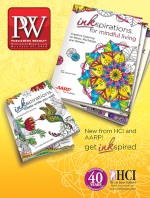For a nation of 5.7 million people, Denmark enjoys a high international profile these days. Copenhagen’s globally influential Noma restaurant has been acknowledged—repeatedly—as among the best in the world, and Danish TV shows such as the political drama Borgen have garnered critical and popular acclaim in the U.S. and elsewhere. Perhaps most enticing, Denmark was named the world’s happiest nation in three of four editions of the U.N.’s World Happiness Report. What’s the secret to Danish contentment? One answer may be hygge.
The concept of hygge (pronounced HYOO-guh) comes from a Norwegian word meaning well-being and was embraced by Danes as early as the 18th century. These days, it’s understood as a feeling of warmth and coziness, and it’s the subject of several titles pubbing in early 2017, some of which have already hit in Britain.
“We noticed that U.K. publishers had something like eight or nine books on hygge slated for publication this fall and winter,” says Becky Cole, executive editor at Plume. In fact, the concept is so pervasive there that Hodder & Staughton is bringing out a parody, Say Ja to Hygge, in November. Cole points to U.S. trends with similarities to hygge, including decluttering, mindfulness, and the slow-food movement, as proof Americans are ready for the concept.
Beyond hygge, at least one editor is counting on a broader interest in the Danish lifestyle. Norton’s Jill Bialosky cites a curiosity about the culture as a whole, stemming from recent political discussions in the U.S. about social infrastructure. “Bernie Sanders and his campaign tapped into a feeling of general dissatisfaction among Americans,” she says, and the Danish way of life may appeal to those looking for a change.
In other words, for several publishers this season, there is nothing like a Dane.
The Book of Hygge
Louisa Thomsen Brits. Plume, Feb. 2017
The author, who grew up in the U.K. and spent summers with family in Denmark, draws on the latter experience in this guide, which, with its paper-over-board format, is aimed at the gift market. It includes photographs of coziness totems (slippers, cats, blankets) amid chapters on topics including shelter, comfort, well-being, and simplicity. Brits also quotes philosopher Søren Kierkegaard and anthropologist Judith Friedman Hansen, among others.
Happy as a Dane
Malene Rydahl. Norton, Jan. 2017
From a Danish-born public speaker on happiness and well-being comes this book, which was a bestseller with its French publisher, Grasset, in 2014. Rydahl investigates why Danish culture prizes well-being over wealth, how free higher education helps eliminate elitism, and how appointing a minister of gender equality has helped Danes find parity between the sexes in government.
How to Hygge
Signe Johansen. St. Martin’s Griffin, Jan. 2017
Johansen, who grew up in Norway and now lives in London, is also the author of Scandilicious (Hodder & Stoughton, 2011). Here, she offers recipes designed for sharing with friends and family, such as Cardamon Twists and Midsummer Almond Torte. Photos depict the recipes and scenes of people enjoying them, as well as simple table settings and Danish landscapes.
The Little Book of Hygge
Meik Wiking. Morrow, Jan. 2017
Written by the CEO of the Happiness Research Institute in Copenhagen, this book includes a dictionary covering need-to-know hygge terms. Hyggebukser, for example, is “that one pair of pants you would never wear in public but are likely to be, secretly, your favorites.” With simple graphics, the book outlines best hygge practices, with chapters on lighting (candles are important), building relationships, and more.



 Volume 263
Issue 42
10/17/2016
Volume 263
Issue 42
10/17/2016





